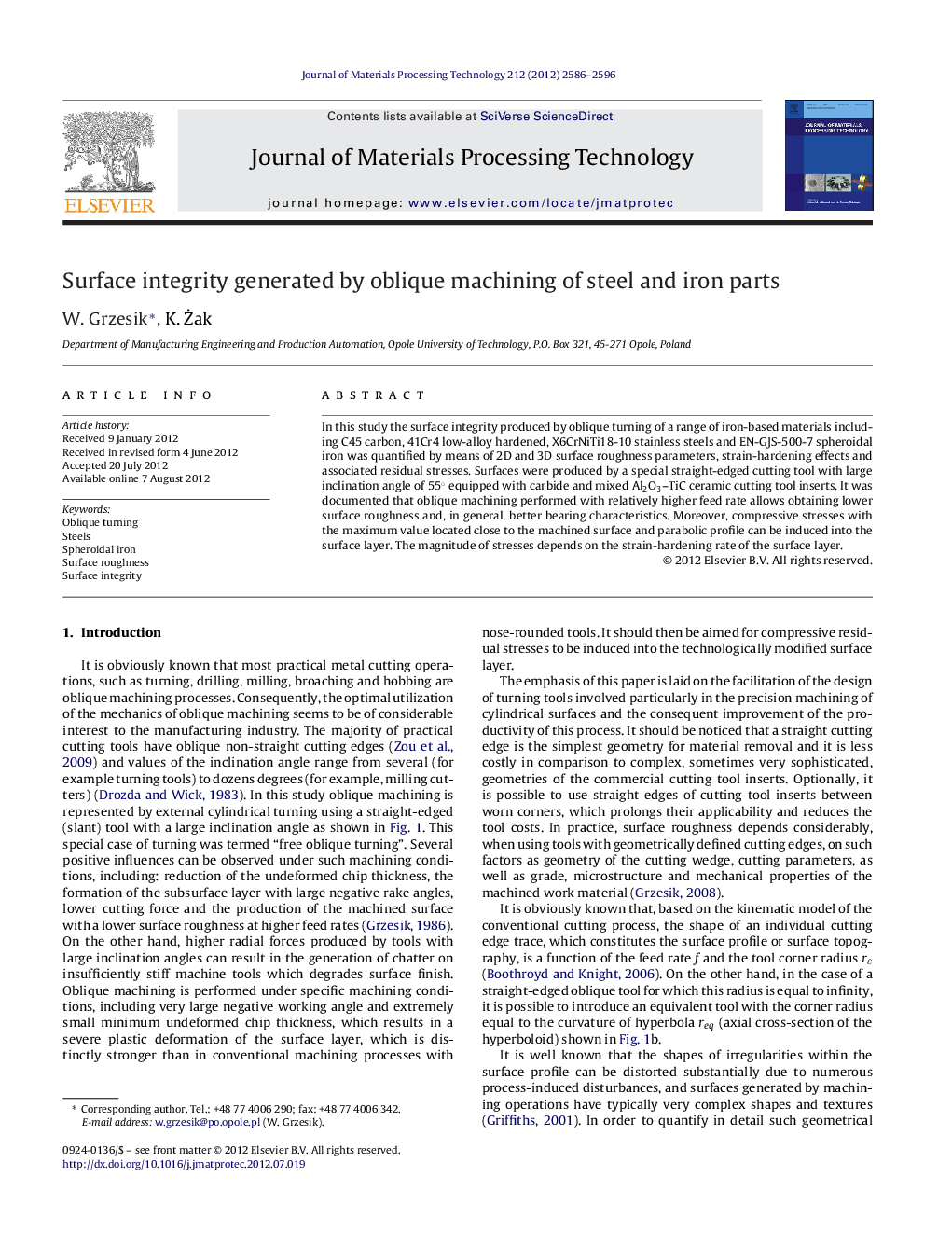| Article ID | Journal | Published Year | Pages | File Type |
|---|---|---|---|---|
| 10417496 | Journal of Materials Processing Technology | 2012 | 11 Pages |
Abstract
In this study the surface integrity produced by oblique turning of a range of iron-based materials including C45 carbon, 41Cr4 low-alloy hardened, X6CrNiTi18-10 stainless steels and EN-GJS-500-7 spheroidal iron was quantified by means of 2D and 3D surface roughness parameters, strain-hardening effects and associated residual stresses. Surfaces were produced by a special straight-edged cutting tool with large inclination angle of 55° equipped with carbide and mixed Al2O3-TiC ceramic cutting tool inserts. It was documented that oblique machining performed with relatively higher feed rate allows obtaining lower surface roughness and, in general, better bearing characteristics. Moreover, compressive stresses with the maximum value located close to the machined surface and parabolic profile can be induced into the surface layer. The magnitude of stresses depends on the strain-hardening rate of the surface layer.
Related Topics
Physical Sciences and Engineering
Engineering
Industrial and Manufacturing Engineering
Authors
W. Grzesik, K. Żak,
